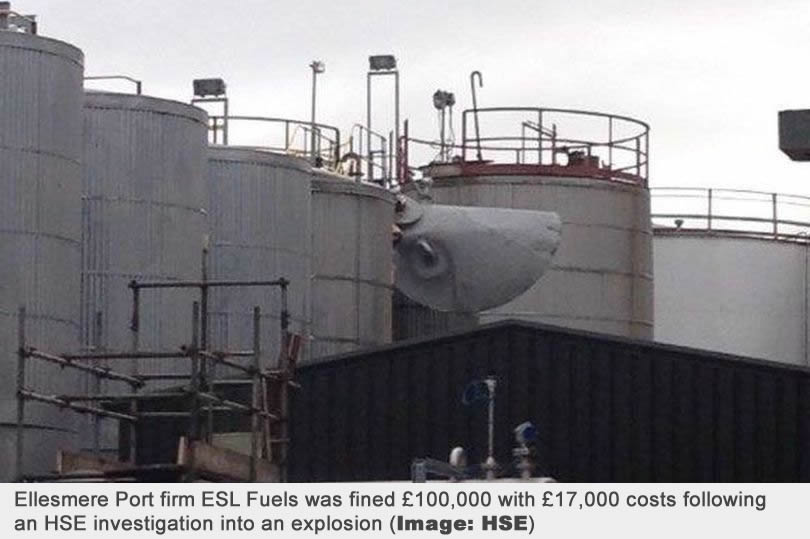

Latest Article

February 19th, 2024
Reynolds Training Makes an Exciting Return to StocExpo 2024
Other posts by this author
July 17th, 2020
Safety trainer and assessor job – careers at Reynolds Training Services Ltd
July 1st, 2019
Reynolds Training Services Announces £150k Investment in Humber Region
December 20th, 2018
100% Pass Rate – NEBOSH HSE Certificate in Process Safety Management
Categories
Competency Health and Safety Articles Health and Safety News Health and Safety Training In-House News Industry News Online Health and safety Process Training Reynolds Training Services rts Training Course Trending Uncategorized
Written by Matthew Pattinson
October 16th, 2017
Health and Safety News
rts
An explosion in an oil treatment tank occurred after contractors, who cut through a pipe at Stanlow Oil Terminal in Cheshire, had been issued a permit to work copied from the previous week.
The permit to work was handed out even though the hazard profile had changed, the Health and Safety Executive (HSE) told IOSH Magazine.
ESL Fuels, which owned the lower-tier COMAH site at Ellesmere Port where it manufactured fuel products, was fined £100,000 over the incident with costs of £17,000 awarded to the HSE.
Liverpool Crown Court heard how in January 2015 waste oil contaminated with cobalt was being cleaned and converted into a clean energy source inside a 6 metre-tall vessel (T 227). Nitric acid had been added to remove the cobalt impurities at the company’s north blend tank farm. This caused the waste oil to foam, overflowing from the vessel into a bund.
ESL installed relief pipework to connect the vessel to an emergency dump tank (T 187) to capture the overflowing foam. The HSE found that T 187 had no vent system. As such, a flammable atmosphere of gas built up inside the pipework and secondary tank.
The explosion happened on 19 January when two contract workers were working inside the north blend tank farm replacing existing pipework as part of a refurbishment project. Neither contractor was aware that tanks 227, 187 and the connecting pipework were still operational.
Cutting the connecting pipework with an angle grinder caused sparks which ignited the combustible gas inside T 187. Whilst no one was injured by the explosion, the vessel’s lid detached and landed on a walkway.
The HSE’s investigation concluded that the risk assessment and method statement submitted by the contractor and, approved by ESL, were unsuitable. This led to the creation of an insufficient permit-to-work which had been copied from an outdated one produced the previous week.
HSE inspector Matt Lea explained how the issuer had signed the permit which greenlighted hot work activity in the bund of T 227 where the ongoing waste oil treatment process was taking place.
“The contractor submitted a risk assessment and method statement for the refurbishment work but the [waste oil treatment] process configuration was changed, as was the route of the pipework,” Said Mr Lea. “Much of this information was communicated verbally which provided scope for uncertainty and misunderstanding.”
“So you’ve got a live process going on at the same time as refurb work which is not being safely controlled. There are ignition sources being brought into the area which have been accepted and ticked on the permit-to-work by ESL’s issuer.”
Following the explosion, ESL complied with an improvement notice and three prohibition notices, changing its permit-to-work system in line with the HSE’s Guidance on permit-to-work systems:
It had previously pleaded guilty to breaching ss 2(1) and 3(1) of the Health and Safety at Work Act.
If you need advice on creating and managing permit to work systems to control work such as maintenance activities on chemical plant and so prevent a major accident, our health and safety specialists are standing by to help.
Written by Matthew Pattinson
October 16th, 2017
Health and Safety News
rts

Let’s get
learning together!
Lines open Monday to Friday, 9am to 5pm, GMT

Prefer to talk by email?

Send a message to
enquiries@reynoldstraining.com
or fill in the form and a member of our safety team is standing by to help.
- John Reynolds